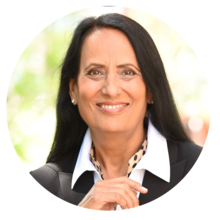About this Presentation
Business, the sciences, organizations, societies and individuals are embedded and invested in norms, rules, regulations and controls that are valid and needed if for no other reason that anarchy cannot be an option. History is full of both great and disappointing lessons of new discoveries having great difficulty in gaining acceptance, even when the results have been demonstrated, without dispute. There are many instances where the rules are applied broadly in ways never intended. There are many instances in which the original reasons for the rules no longer exist, yet these rules are firmly embedded in behavior, policies and even laws. This session will demonstrate the thinking that is required of the change agent to bring their targeted audience on the journey that will include BUILDING A BRIDGE OF UNDERSTANDING so that one can feel safe on their journey to acceptance. Video length: 52:04. PDF: 20 slides.
What Will You Learn
To help you get the most value from this session, we’ve highlighted a few key points. These takeaways capture the main ideas and practical insights from the presentation, making it easier for you to review, reflect, and apply what you’ve learned.

The concept of 'building a bridge of understanding' is a crucial tool in any organization to ensure effective communication and understanding between different departments or individuals.
Traditional cost accounting can often show results differently from throughput accounting, leading to potential conflicts or misunderstandings.
Building a bridge of understanding between the two accounting methods during the analysis phase of an opportunity can help to alleviate these conflicts and provide a clearer picture of the potential profitability of an opportunity.
Instructor(s)
Rocco Surace
Rocco Surace - past Chairman of TOCICO. He is a partner of Bonadio & Co a top 50 CPA firm in the US. He is co-author of the recently published Throughput Economics, which develops a practical methodology for better decision making by looking at the impact of decisions on a company’s bottom line, including the financial impacts, capacity limitations and the impact of uncertainty.
Rocco facilitates the discussion and open with his observations on what opportunities lie ahead.

Ms Alka Wadhwa
Alka Wadhwa is an experienced consultant and process improvement expert with over 24 years of expertise in the Theory of Constraints (TOC), Lean Six Sigma, and organizational performance optimization. She has successfully led projects in healthcare, financial services, and manufacturing, driving significant improvements such as a 67% boost in hospital operations and a 140% increase in outpatient visits.
Previously, Alka Wadhwa spent 17+ years at GE Global Research Center, where she led initiatives to enhance various GE businesses through advanced technologies, process redesign, and system optimization. Founder of Better Solutions Consulting, LLC, she specializes in using TOC, Six Sigma, and data analytics to streamline operations and build high-performance teams.
Her work has earned her multiple accolades, including the Empire State Award of Excellence in healthcare.

Dr Gary Wadhwa
Dr. Gary Wadhwa is a Board Certified Oral & Maxillofacial Surgeon with extensive experience in the field. He completed his Oral & Maxillofacial Surgery training at Montefiore Hospital, Albert Einstein College of Medicine in Bronx, NY, and has served as an Attending at prestigious institutions like St. Peters Hospitals, Ellis Hospital, and Beth Israel Hospital in NY. With a career spanning over two decades, he was the former CEO and President of a group specialty practice in NY from 1994 to 2015. Dr. Wadhwa holds an MBA from UT at Knoxville, TN, and has undergone additional training in System Dynamics at MIT, Health System Management at Harvard Business School, and Entrepreneurship and healthcare innovations at Columbia Business School. Committed to expanding access to Oral & Maxillofacial Surgery care, he is currently engaged in a meaningful project to provide healthcare services to underserved populations in inner city and rural areas through non-profit Community Health Centers.
